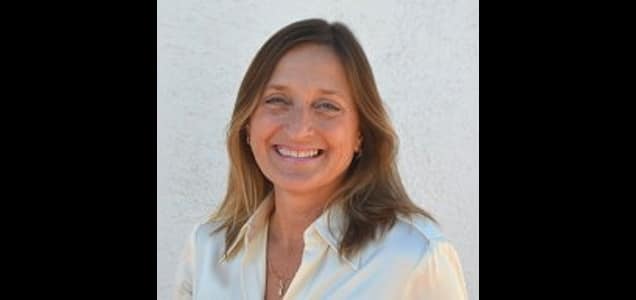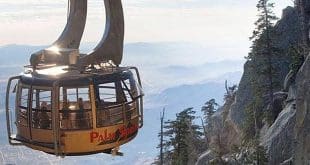Kathy Greco serves as CEO of Desert Healthcare District and is slated to receive this year’s prestigious “Jackie Lee Houston Heart of Gold Award” from the Women Leaders Forum of the Coachella Valley on January 31st. As CEO of Desert Healthcare District, Greco led the charge to provide $5 million in funding for the new UCR Medical Center Residency Program at Desert Regional Medical Center. In addition, she worked to fund over $900,000 to place the Alliance for a Healthier Generation Program, in partnership with the Clinton Health Matters Initiative, in every school in the Coachella Valley—touching 71,000 students in 32 schools throughout the desert’s three school districts. Kathy Greco also launched a new food insecurity initiative to ensure access to healthy food for the underserved, including low-income children and seniors. The program provides over a million pounds of fresh fruit and vegetables to food distribution sources in the Coachella Valley.
KB: I understand you grew up on the East Coast, graduated magna cum laude graduate from Virginia Tech with a degree in biology, and then served in the Peace Corps in Zaire. Tell me about that experience.
Kathy Greco: I grew up in a very small town in rural Maryland. When I decided to join the Peace Corps and was assigned to Zaire, I had never even been on an airplane before. Zaire is both magical and heartbreaking. I was the first white person that many of the children living in the remote villages had seen. Their immediate response was to rub my skin and touch my hair; within minutes they were teaching us songs and embracing us in dance. After being there for a just a few weeks, I couldn’t help but notice a number of large pieces of farm equipment rusting on the sides of the roads. When I asked about the reason they were there it was explained that a US Foundation had wanted to help support the farming efforts of Zaire to help address the high rate of starvation. They had the equipment delivered at great expense; however, they failed to realize that the country had little access to fuel for the equipment and if they could find it, it was prohibitively expensive. The locals said what they really needed were rakes, hoes, and shovels. This was my first lesson in the importance of needs’ assessments and community input and engagement.
KB: And what then brought you to Palm Springs?
KG: The opportunity to return to CA and work again for a CA Special District, especially one focused on community healthcare, was my primary reason for coming to Palm Springs.
KB: You were brought on as CEO of Desert Healthcare District in 2011, and I understand you just signed another 3-year contract. What’s your mandate as well as your goals for the next three years?
KG: As the CEO of the District and the Desert Healthcare Foundation, I work together with the District Board and Staff to implement the goals and objectives of the District’s Strategic Plan and identify and engage partners in an effective collective effort to positively impact the health outcomes of the residents of the Coachella Valley. The current District goals are:
1.) Ensure accessto high quality hospital care at Desert Regional Medical Center.
2.) Support the practices and policy changes needed to achieve health equity, eliminate disparities, and improve health of all groups within the Coachella Valley.
3.) Create social and physical environments that promote good health for all groups.
4.) Promote and support healthy development and healthy behaviors across all life stages.
5.) Increase the resources and revenues of the District to help achieve its goals and objectives.
KB: Kathy, for the uninitiated, can you describe how the Desert Healthcare District came to be?
KG:Prior to 1948, desert residents and visitors requiring hospitalization were transported to healthcare facilities in Indio, Loma Linda, Redlands, San Bernardino, and Riverside. In 1942, when the United States entered World War II, the U.S. Army bought and converted the El Mirador Hotel in Palm Springs into the 1,600-bed Torney General Hospital for wounded soldiers. After the war ended in 1945, El Mirador saw several different owners until it reopened in 1952.In the meantime in 1948, the Desert Hospital District was formed to meet the increasing medical needs of the rural desert communities in and around Palm Springs using property tax dollars of the new “District” residents for support. The new District Hospital was a single building with 33 beds located on 7.85 acres of land on the hotel grounds. It cost $500,000 ($450,000 for the building; $50,000 for the land).Purchasing the entire property in 1972, Desert Hospital transformed the once-glamorous hotel site into a modern hospital. Today, the 387-bed acute-care hospital provides District residents with high quality, advanced healthcare services.
KB: And you work quite differently now. What are your current programs and initiatives?
KG: Through a system implemented in 1998, the District continues its commitment to the health of its residents by leading the community’s collective efforts to address healthcare access, the local healthcare workforce shortage, health disparities, socioeconomic determinants of health, and public health issues.
Since 1999, more than $60 Million has been allocated through a best practices grant administration department. District revenues from property tax, a medical building asset, and an investment portfolio support these efforts.
KB: How many people does the DHD employ? And do you work alone or with strategic partners—other public agencies or nonprofits?
KG: The District employs a total of five staff members. Since the District is not the primary provider of most type of services, the District collaborates with other organizations and assists with funding. The District does not complete with other providers of similar care and will identify gaps in healthcare services and programs. Some of the District’s strategic partners include ACT for MS, Angel View Inc., Palm Springs Unified School District, CVAG, CVEP, the City of Palm Springs, The California Endowment, Regional Access Project Foundation, UCR School of Medicine, Borrego Community Health Foundation, to name a few of many partnerships and collaborators.
KB: Whom does the Desert Healthcare District serve: how many people does the district serve each month and is there a specific geographic boundary?
KG: Boundaries for a proposed hospital district were historically based on the distance between the communities and the closest available acute care hospital services. The boundaries of the Desert Healthcare District can generally be described as being south of the Riverside/SanBernardino County Line; west of Washington Street; north of the Riverside/SanDiego County Line; and east of the Whitewater Canyon Rd. The District’s service area (approximately 60% of the Coachella Valley) encompasses the cities of Rancho Mirage, Palm Springs, PalmDesert, Cathedral City, Desert Hot Springs and unincorporated areas within its 457 square mile service area. The District serves approximately 250,000 Coachella Valley residents within these boundaries. Property tax dollars from these residents help ensure access every day to quality hospital services at the District/Community-owned Desert Regional Medical Center operated by Tenet Corporation. Property taxes and revenue from District investments also help fund healthcare and wellness infrastructure and programs and services in partnership with local, regional, county, and state public agencies and nonprofits.
KB: You’ve mention that, through the District, area taxpayer’s dollars stay local to benefit local residents. Can you give me some examples of this?
KG: Prior to leasing Desert Regional Medical Center to Tenet, all District revenue directly supported the operations and management of the hospital. Since 1999, the District has invested more than $60 million to directly benefit the health and wellness of the District residents. Examples include hospital partnership projects to support and advance community health including the UCR School of Medicine Primary Care Residency Program in the Coachella Valley with a total investment of $7,143,423 and addressing healthcare access through the support of community clinic construction and renovation with a total community investment of $14,573,789. Additionally, over $11 million has been invested to address the healthcare workforce shortage through partnerships with COD, CSUSB, UCR, and CVEP.Over $6 million has been invested to help support the health of vulnerable and fragile populations including funding community nonprofits including Angel View, Stroke Recovery, Act for MS, Pegasus, Shelter from the Storm, and Safehouse. Since 2009, the District has also invested over $4 million to support the health of the food insecure.
KB: There are so many factors that contribute to both an individual and a society’s health and wellbeing—how do you determine which initiatives to tackle?
KG: The District board and community recognize that a healthy community is not limited to the four walls of the hospital. The state legislature reinforced this objective in 1994 when the title of Health and Safety Code section 32000 et seq.; the “Local Hospital District Law” was changed to the “Local Health Care District Law.” This broader mission of the District allows the Board of Directors to dedicate resources to the health and welfare of the entire District. The District identifies the community’s health needs through the funding of community needs assessments including the Coachella Valley Health Monitor conducted by the Health Assessment Resource Center (HARC) every three years since 2007; annual strategic planning retreats; community engagement on the Program Committee which reviews and recommends the grant funding through a structured, best practices grant administration program; on-going review and analysis of data and statistics provided through public and private agencies; and participation in strategic planning and blueprint development conducted by partner agencies.
KB: How will the Affordable Care Act impact the Desert Healthcare District?
KG: The Healthcare District is committed to supporting and improving access to healthcare for its residents as well as promoting preventive care, early intervention, and wellness. The ACA will provide the changes necessary to ensure access for all and focus healthcare delivery into a coordinated, comprehensive system that addresses these District goals.
KB: When you’re not hard at work, what activities do you enjoy in and around Palm Springs?
KG: Anything outdoors including walking and running with our two Huskies, bicycling, swimming and gardening; also love to people watch while lunching outdoors with my husband at our favorite Palm Springs restaurants.
KB: Kathy Greco, what is it that you love most about the community of Palm Springs?
KG: The natural beauty, architectural personalities, and energy.






